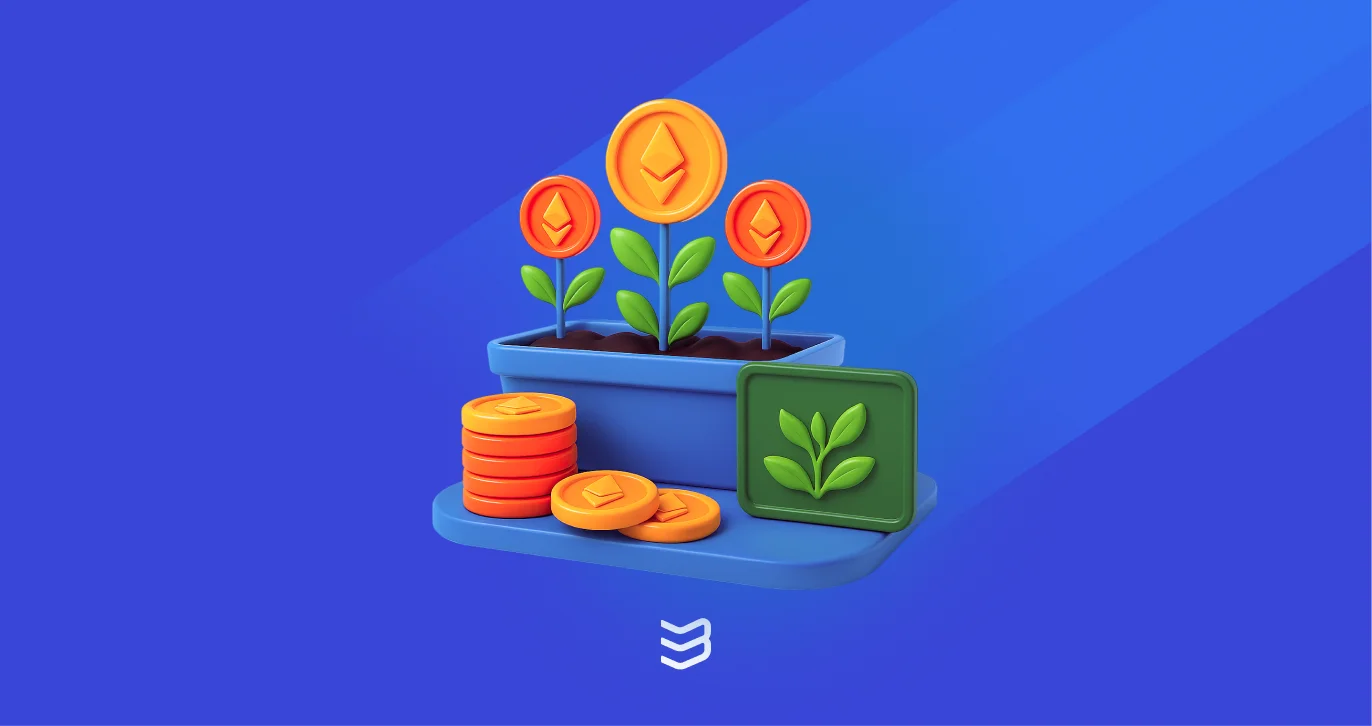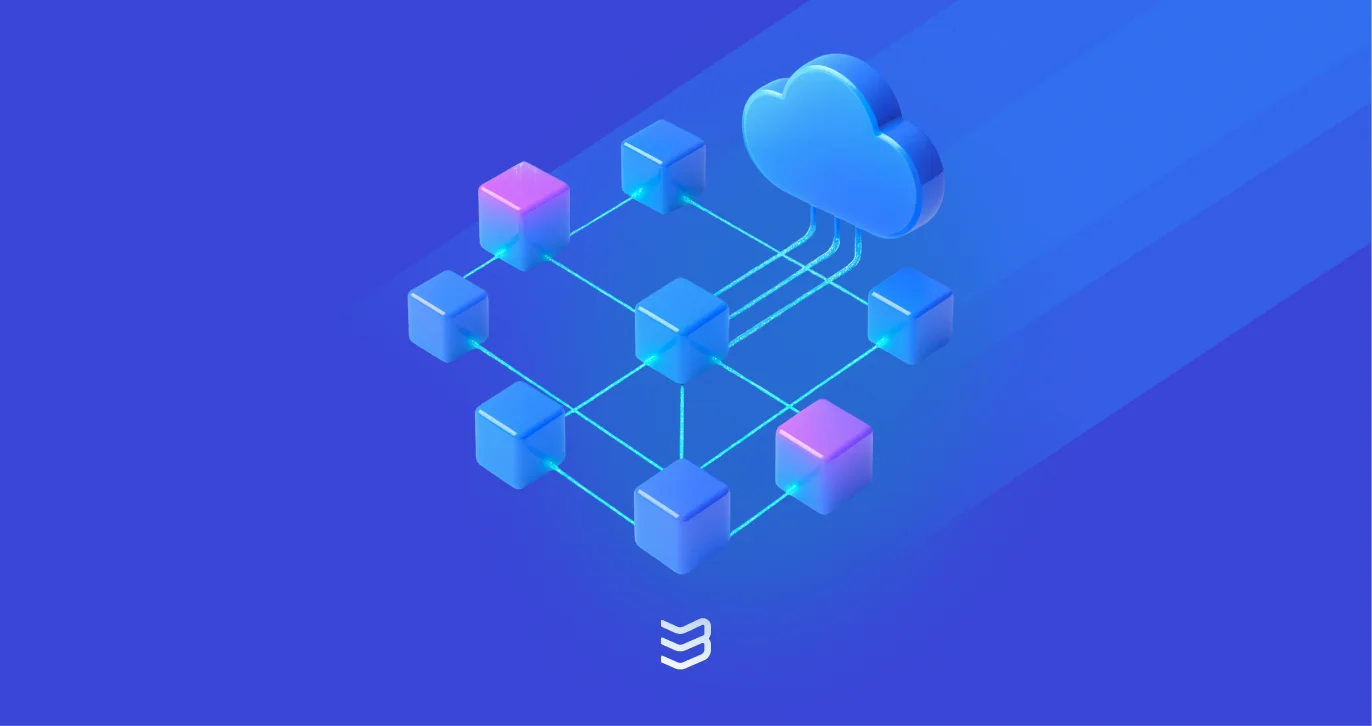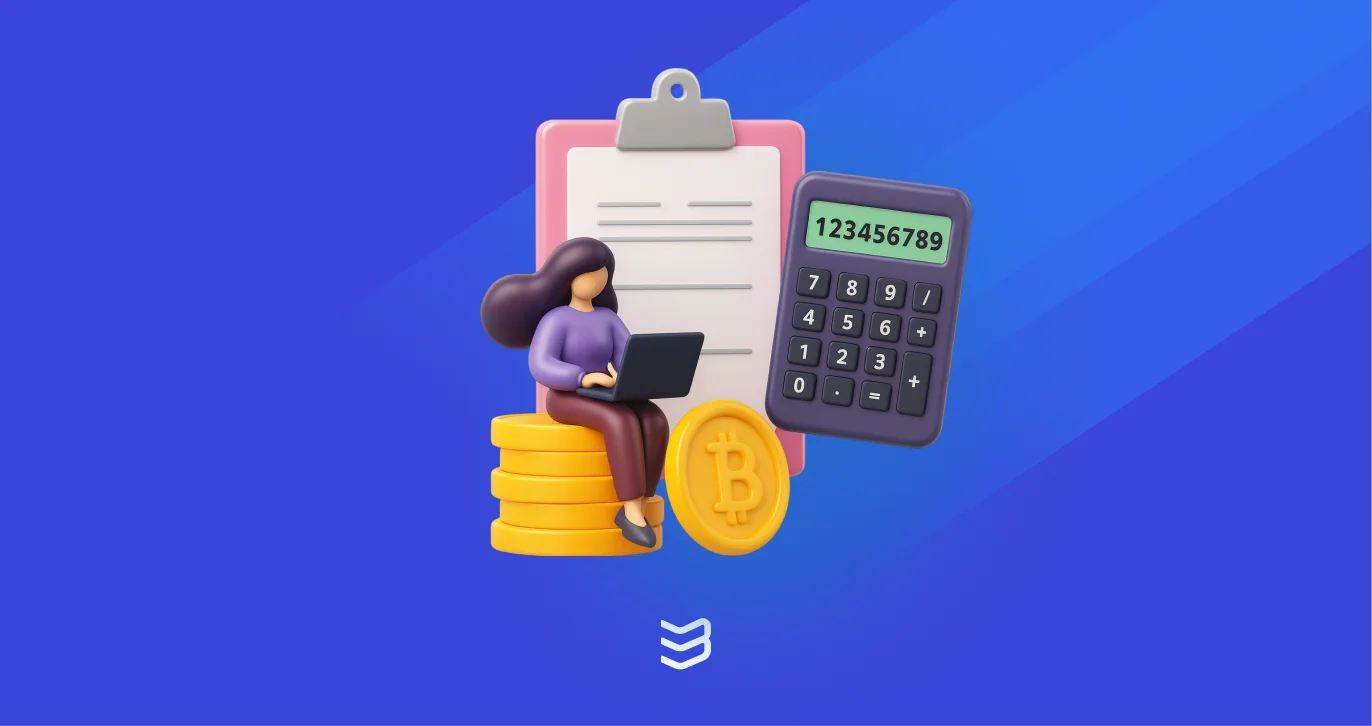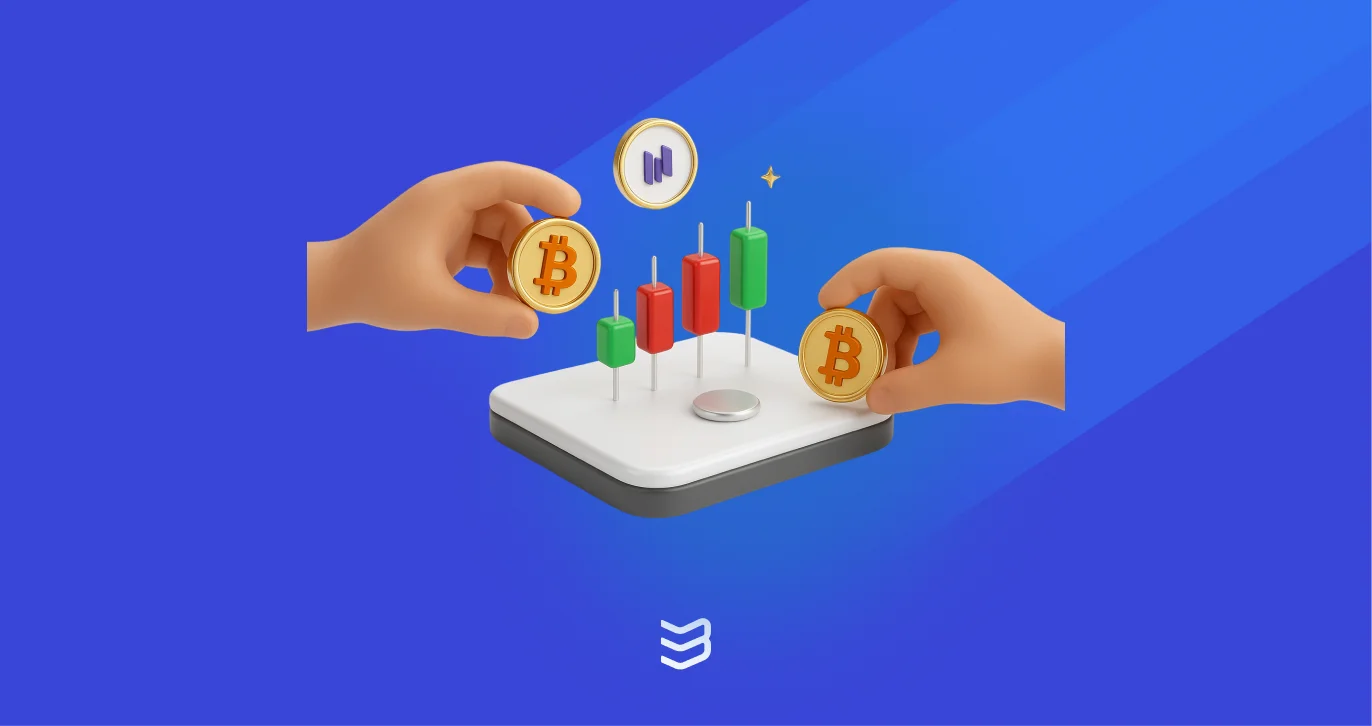tl;dr
- Yield farming is a DeFi strategy to earn passive income by staking or lending crypto assets.
- Rewards often come in volatile altcoins and vary by platform; some offer stablecoin-based yields.
- Most rewards come from trading or borrowing fees, often paid in governance tokens that also allow voting rights.
- Common strategies include lending, liquidity provision, staking, and using yield aggregators like Yearn or Beefy.
What is Yield Farming? Passive Income in Crypto
Yield farming is the practice of earning passive income in decentralized finance (DeFi). It typically involves staking or providing liquidity to decentralized exchanges (DEXs) or lending platforms.
This strategy allows experienced crypto users to earn rewards, often in the form of volatile altcoins, without actively trading. Some platforms, like Aave and Compound, offer more stable returns by rewarding users who stake stablecoins such as USDC or USDT.
While potentially lucrative, yield farming carries risks and is generally not recommended for beginners or users unfamiliar with DeFi.
Understanding Yield Farming Rewards
In most DeFi projects, trading or borrowing fees are the primary driver of yield farming rewards.
As users trade within a liquidity pool, a small percentage of each transaction is collected and distributed to liquidity providers. These trading fees often generate token rewards, typically issued in the form of governance tokens. Governance tokens not only represent a share of platform incentives but also give holders the power to vote on protocol upgrades and decisions.
It’s the trading activity powered by real demand that ultimately sustains long-term yields.
In lending and borrowing protocols, yield farming rewards are primarily generated from borrowing fees. When users borrow assets, they pay interest, which is then distributed to the users who supplied liquidity to the protocol.
Navigating the Fields: Popular Yield Farming Strategies
There are plenty of ways to farm yield in DeFi, each with its own balance of risk, reward, and complexity. Here are some of the most popular strategies for today’s yield farmers:
Lending and Borrowing
By supplying assets to lending protocols like Aave or Compound, users earn interest from borrowers. This strategy is relatively low-risk and passive, making it a favorite for conservative investors.
Liquidity Provision
Providing liquidity to decentralized exchanges like Uniswap or Curve involves depositing token pairs into pools. In return, users earn a share of trading fees and may receive incentive tokens, but they must be aware of impermanent loss.
Staking
Staking typically involves locking tokens in a blockchain network to help secure it, often earning predictable, low-to-moderate rewards. Platforms like TokensFarm for altcoins or Hord for ETH offer flexible options. Liquid staking tokens can also be used as collateral or liquidity in other yield farming platforms.
Yield Aggregators (Robo-Advisors)
Platforms like Yearn or Beefy Finance automatically shift user funds across DeFi protocols to chase the best yields. Ideal for hands-off users, though aggregator strategies can still carry smart contract risk.
The Risks of Yield Farming: A Realistic Look at Potential Pitfalls
Yield farming can be lucrative, but it comes with real risks. Liquidity providers may suffer impermanent loss when token prices shift, and every DeFi platform carries smart contract vulnerabilities. While staking is generally safer and more predictable, its rewards are often lower than other strategies.
Market volatility, and even platform hacks are all part of the ecosystem.
Ultimately, there’s no such thing as a “risk-free” crypto strategy. Whether you’re farming, staking, trading, or simply holding assets, some level of risk is always involved. It’s crucial to do your research and understand what you’re getting into before deploying capital.
Where to Start Your Yield Farming Journey: Top Platforms in 2025
There’s no shortage of DeFi platforms offering yield farming opportunities in 2025, but choosing where to begin can be overwhelming. Below is a curated list of reputable protocols that have earned trust and maintained activity across the years.
Aave
Aave is a leading decentralized lending platform. Users can supply assets to earn interest or borrow against their collateral. It’s known for its broad asset support, stable and variable rate options, and strong focus on protocol security.
Compound
Compound is one of the original DeFi lending protocols, enabling users to earn yield by supplying assets into liquidity pools. Interest rates are algorithmically adjusted based on supply and demand.
Uniswap
Uniswap is the most popular DEXs on Ethereum. Since it’s initial release on Ethereum, Uniswap expanded to 12 additional chains. Users can provide liquidity to trading pairs and earn a share of swap fees.
Curve Finance
Curve specializes in low-slippage swaps between stablecoins and similar assets. It’s ideal for conservative liquidity providers and is widely used in stablecoin-based yield strategies.
Yearn.finance
Yearn aggregates yield farming opportunities across multiple platforms. It automatically shifts funds to the highest-earning strategies, making it beginner-friendly and efficient for passive income seekers.
Getting Started with Yield Farming: A Quick-Start Guide
With a few tools and some basic knowledge, anyone can begin earning passive income through DeFi platforms. Here’s a simple guide to help you take your first steps into the world of yield farming.
Setting Up Your Wallet
To begin yield farming, you’ll first need a crypto wallet that supports DeFi platforms. MetaMask (browser extension and mobile app) and Trust Wallet (mobile app) are two of the most popular. These wallets let you securely store your crypto and interact directly with dApps.
Acquiring Crypto
Once your wallet is set up, you’ll need to acquire cryptocurrencies. Typically, ETH is required to pay for gas fees on Ethereum-based platforms. You’ll also need assets like USDT, USDC, or DAI to deposit into DeFi protocols. You can purchase these through centralized exchanges like Coinbase or Binance and then transfer them to your wallet or directly on your wallet via credit card.
Choosing & Connecting to a DeFi Platform
After funding your wallet, go to a DeFi platform’s official site (such as Aave or Uniswap) and click “Connect Wallet.” Approve the connection through your wallet app to begin interacting with the protocol. From here, you can lend, stake, or provide liquidity.
Start Small
DeFi can be complex and fast-moving. Always start with a small amount to get familiar with the process, understand the risks, and avoid costly mistakes. Once you’re confident, you can explore more advanced yield farming strategies.
Frequently Asked Questions (FAQ)
Is yield farming profitable?
Yes, yield farming can be profitable, especially in high-yield DeFi protocols. However, profits depend on market conditions, platform reliability, and strategy. While some opportunities offer high APYs, they also come with higher risks.
What is the difference between yield farming and staking?
Staking involves locking tokens typically in a network to help secure it and earn predictable rewards. Yield farming, on the other hand, involves lending or providing liquidity in DeFi protocols to earn variable rewards, often higher but riskier and more complex than staking.
How much money do I need to start yield farming?
You can start with as little as $50–$100, but be aware that gas fees (especially on Ethereum) and transaction costs can eat into small profits. Starting small is wise for beginners to learn the process before committing more capital.
Is yield farming safe?
Yield farming is not risk-free. Risks include impermanent loss, protocol hacks, smart contract bugs, rug pulls, and volatile token prices. Always research protocols, consider audits, and avoid investing more than you can afford to lose.
How is yield farming taxed?
Tax treatment varies by country, but generally, yield farming rewards are considered taxable income at the time of receipt. Selling or converting earned tokens may also trigger capital gains tax. Consult a tax professional for guidance based on your location.






